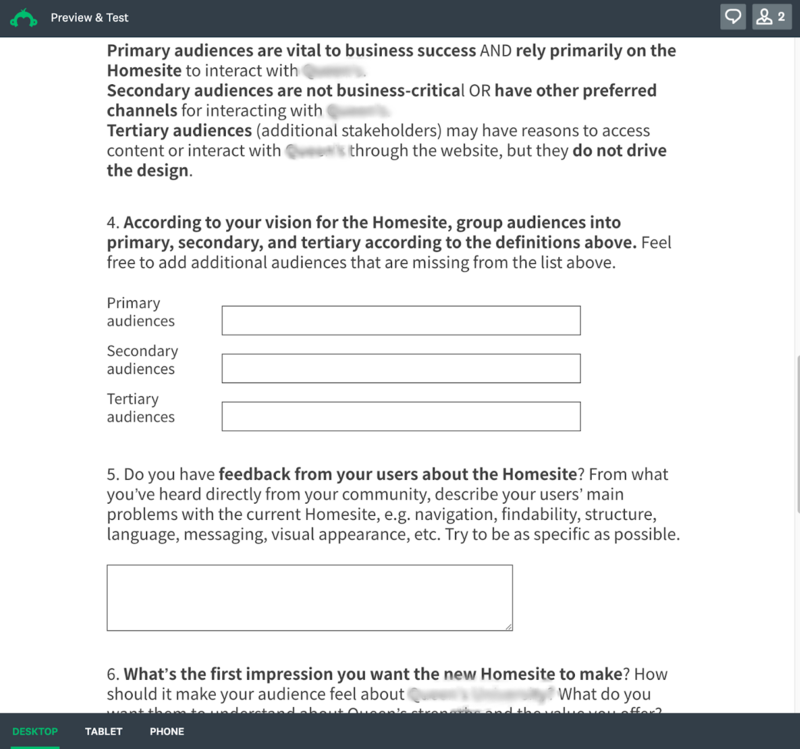Do you want to design a better user experience for your website or app? Start by figuring out who your users are, what are their needs, and what problem you’re trying to solve. This information is essential to creating a great user experience.
If you don’t understand your users and their needs, it’s impossible to create a website that meets their expectations. That’s why UX discovery is so important and is the first step in the UX design process – it gives you the foundation you need to build an amazing website.
Read on to learn more about UX discovery and how it can help improve your user experience!
What Is UX Discovery and Why Do You Need It?
When you are working on a project for a client, you don't always have all the information you need upfront. This is especially true when you're working on a website or feature from scratch. In these cases, UX discovery allows you to gather all the information you need before starting the design process.
Discovery is a preliminary phase in the UX-design process that involves researching the problems to be solved, and gathering enough information and initial direction on what to do next. Discovery phases do not involve testing prototypes or solutions, but rather, framing opportunities and strategies. For example, if your client needs to solve a problem around date filters, you might want to spend some time researching date filter UI patterns that would improve the experience.
This information-gathering stage is important for several reasons:
- It allows you to truly understand both your client's business objectives and the needs of their users
- It helps you identify the most important metrics of the project and how you will measure its success
- It saves time and money by creating a vision and strategy for the entire team, including the client

Understanding the target audiences is fundamental in UX discovery.
What Steps are Involved in the UX Discovery Process?
The steps that you will take during the discovery phase will vary from project to project, but in order to make better UX choices, you would usually include the following steps:
Kickoff Meeting
The discovery process begins with a kickoff meeting. This is where you'll start to understand the client’s needs. You can share your thoughts and ideas, and learn more about what the client is looking for in a partner. By the end of the meeting, both parties should have a good sense of where to go next.
The kickoff meeting is the point where you get to know each other and share what you already know about the project to this point. You can use this meeting to identify gaps in knowledge and outline timelines and next steps. Overall, this meeting should give you a good idea of how you will work together.
Whether it’s a small project or redesigning an outdated website, it is also a good time to begin identifying the measures of success for the project, as well as any gaps that will need to be filled during the rest of the discovery process.
Information Gathering
Now that you have a high-level understanding of the client's needs and objectives, it's time to start gathering the information that will help you discover detailed insights that will later inform the successful design. This phase of the process is all about research. You'll need to collect data from a variety of sources to make informed decisions about your design. This research can take many different forms, including interviews, surveys, usability testing, and competitive analysis.
Setting up a questionnaire or survey with stakeholders is a great first step in the information-gathering phase. You can take some time to learn about the client's goals, audience, priorities, and content. You can tailor your method of information gathering, depending on the size of the organization that you are working with.
If it is a smaller organization, it may prove more useful to set up interviews and go in-depth with your client. Analyzing your client's needs in this way allows you to go deep and understand them on an individual level. Larger organizations may have existing user research that you can review and analyze. If not, designing a simple survey or questionnaire will help you get answers from a large group effectively and efficiently.

Screenshot from a UX survey created on Survey Monkey
UX Research
A great way to conduct UX research is by combining stakeholder and user research. One of the best ways to learn about your users’ needs is by interviewing them.
Once you have gathered all the information you need, it's time to start analyzing it and looking for trends. This is where your UX research skills come in handy! You'll need to take all the data that you've collected and turn it into insights that will help inform your design. For example, you might want to pay attention to the functionality of search and navigation interfaces, as well as the way information is organized throughout the website. This will help inform your design and make sure that the website you create is easy to use.
Another, less time-consuming option would be to conduct a heuristic usability evaluation of the existing website. This is essentially where UX experts review a website and write an analysis with areas for improvement.
Personas/User Journey Mapping
After conducting your research, you should have a good understanding of your user's needs, pain points, and goals. With this information in hand, you can start to create personas: fictional characters that represent your typical users. These personas will help you to keep your users’ needs at the forefront of your design process.
Personas are based on real data, but they are not real people. Creating personas is a way to make your users' needs more concrete and relatable.
User journey mapping is another way to keep your users' needs at the forefront of your design process. In this step, you will map out the steps that your users take to achieve their goals. This will help you to understand their needs and pain points, as well as what they value most.

For UX purposes, we aim for personas that focus on scenarios, tasks, needs and pain points.
Next Steps (and More to Come)
In this article, we have provided a general overview of the UX discovery process. We looked at conducting user research, as well as some of the specific methods that can be used. We also highlighted some of the key steps in the UX design process, including usability testing, competitive analysis, and persona development. These should be helpful to get your UX discovery off the ground and to make sure your project is headed in the right direction.

